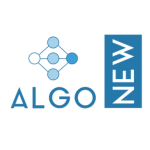A leading Latin American bank, specializing in consumer banking and small-to-medium enterprises (SMEs), faced mounting challenges in a competitive market.
With outdated legacy systems limiting its ability to deliver seamless digital experiences and operational inefficiencies impacting customer satisfaction, the bank saw an opportunity to reposition itself as a technology-driven leader. The bank sought to meet the increasing demands of its growing customer base, including individuals and SMEs, for more intuitive, reliable, and innovative digital solutions.
THE OPPORTUNITY
With outdated legacy systems limiting its ability to deliver seamless digital experiences and operational inefficiencies impacting customer satisfaction, the bank saw an opportunity to reposition itself as a technology-driven leader. The bank sought to meet the increasing demands of its growing customer base, including individuals and SMEs, for more intuitive, reliable, and innovative digital solutions.
Legacy infrastructure issues
The bank’s legacy systems were emblematic of a traditional financial institution built for a pre-digital era. Key characteristics included:
- Fragmented Infrastructure: Systems were siloed, making data sharing and integration across different departments slow and cumbersome.
- Limited Scalability: As the bank grew, its core systems struggled to handle increased transaction volumes and the complexity of serving diverse customer segments.
- Inflexible Technology: The outdated platforms lacked the adaptability to integrate modern technologies or roll out new digital services quickly.
- Operational Inefficiencies: Frequent system outages and long response times undermined customer trust, particularly among SME clients who relied on consistent access for their business operations.
This technological debt impeded the bank’s ability to compete in a market increasingly dominated by digital-first competitors and fintech innovators.
THE SOLUTION
To address these challenges and capitalize on the opportunity, the bank launched phased digital transformation initiative:
- Dual-Tech Strategy: The bank pursued a twofold approach, enhancing legacy systems to provide immediate improvements while simultaneously developing a cloud-native, scalable infrastructure to future-proof its operations.
- Agile Operating Model: Cross-functional agile teams were formed, combining expertise in engineering, data analytics, product design, and customer service. This setup allowed the bank to respond swiftly to customer needs and launch tailored solutions for individuals and SMEs.
- Customer-Centric Digital Solutions:
- For consumers, the bank focused on intuitive mobile and online platforms offering personalized financial products, such as savings plans and credit facilities.
- For SMEs, it developed tools for easier credit applications, cash flow management, and access to financial advisory services, helping businesses thrive in competitive markets.
- Talent Development: The bank emphasized building an internal ecosystem of highly skilled professionals. By investing in training and hiring talent in technology and agile methods, it ensured sustainable innovation and growth.
Cloud-Based Core Banking System: The deployment of a cloud-based platform enabled the bank to scale its operations, reduce costs, and offer enhanced reliability across digital channels.
THE IMPACT
The transformation yielded transformative results, reinforcing the bank’s position as a trusted partner for consumers and SMEs alike:
- Enhanced Consumer and SME Engagement: The bank’s digital platforms experienced a significant uptick in activity, with 70% of users interacting daily. SME clients particularly valued the streamlined processes for loan applications and real-time financial insights.
- Operational Excellence: Downtime was reduced dramatically, leading to a sixfold improvement in service availability, which was critical for SME customers managing their day-to-day finances.
- Business Growth: The bank achieved a 7% annual increase in profit before taxes, even as it invested heavily in digital transformation. This growth was driven by greater adoption of its digital products and services by consumers and SMEs.
- Market Leadership: The successful transformation positioned the bank as a regional leader in digital banking, particularly within the consumer and SME segments, helping it attract new clients and build stronger relationships with existing ones.
LESSONS LEARNED
Understanding Consumer Needs
Tailoring solutions to the unique challenges faced by these groups was key. For consumers, it meant user-friendly platforms with personalized products, while for SMEs, it involved tools for cash flow management and credit access. Understanding Consumer and SME Needs
Legacy Systems & Innovation balance
The dual-tech strategy allowed the bank to immediately improve its existing systems while investing in cutting-edge technologies.
Talent as a Foundation
Building an in-house team with expertise in digital transformation ensured the initiative was implemented effectively and positioned the bank for long-term success.
Agility Drives Innovation
Agile practices empowered the bank to develop and iterate on solutions rapidly, ensuring alignment with customer needs and market trends.
Leader companies rely on our innovative AI-based technology
CONCLUSION
This case demonstrates how a leading Latin American bank transformed itself to meet the needs of its diverse clientele, from individual consumers to SMEs. By embracing a bold, customer-focused digital transformation strategy, the bank enhanced its operations, improved customer satisfaction, and cemented its role as a trusted partner in the financial journeys of individuals and small businesses in the region.
Request your free demo!

Let’s find together the best Smart Solution for your business







